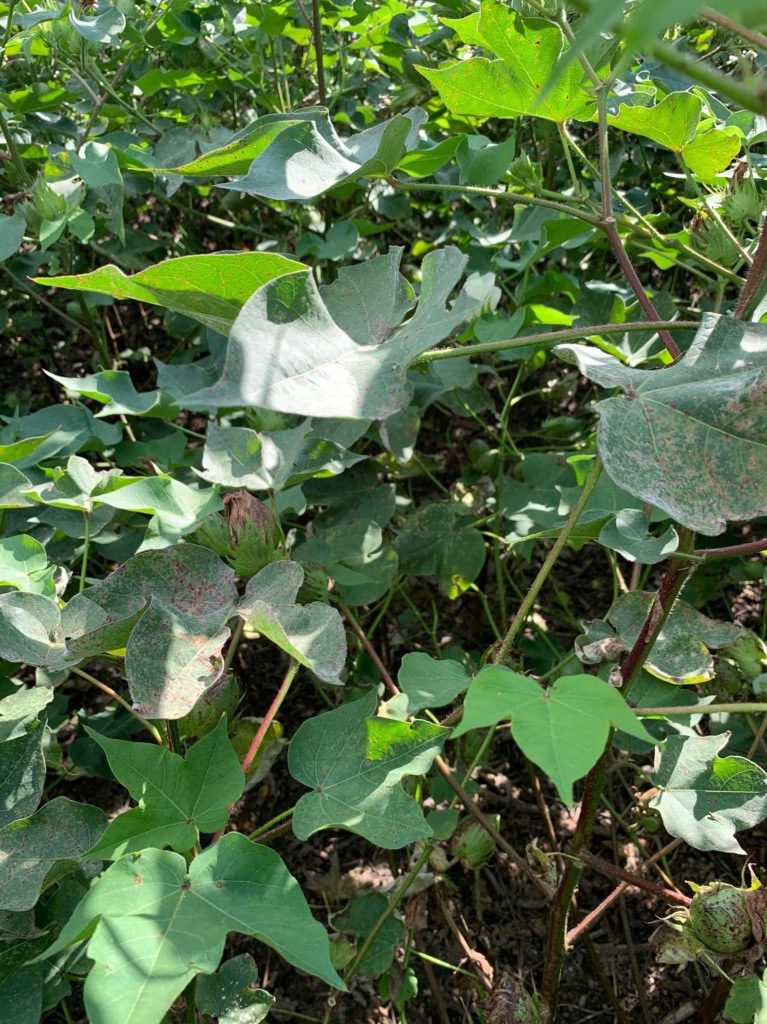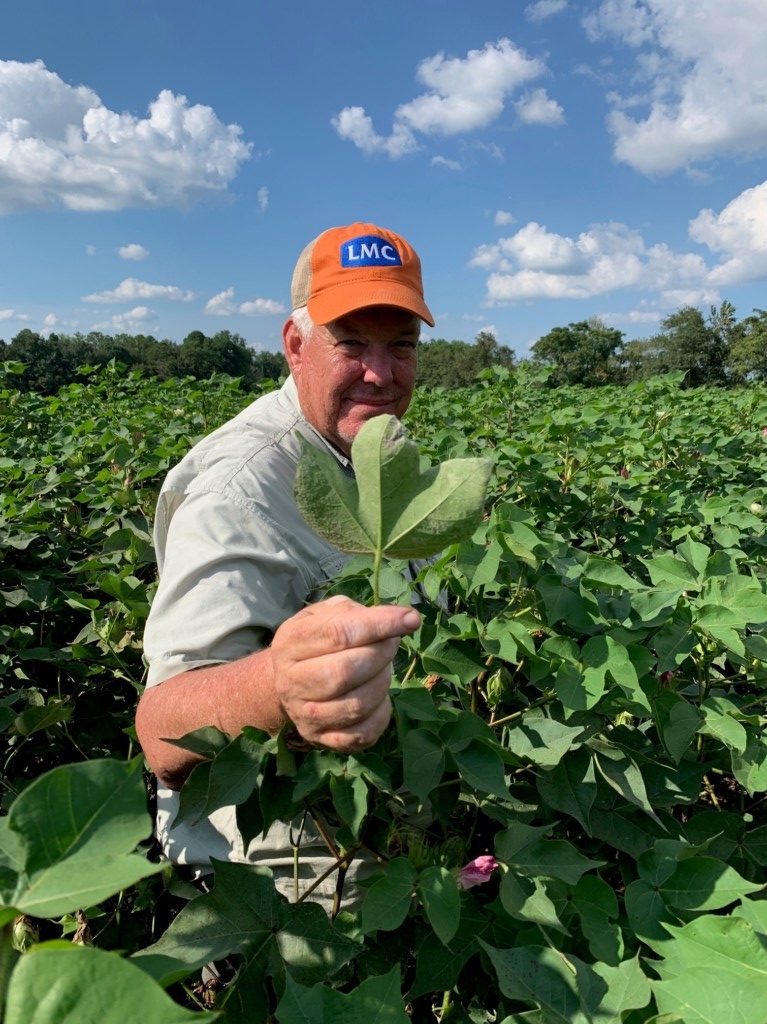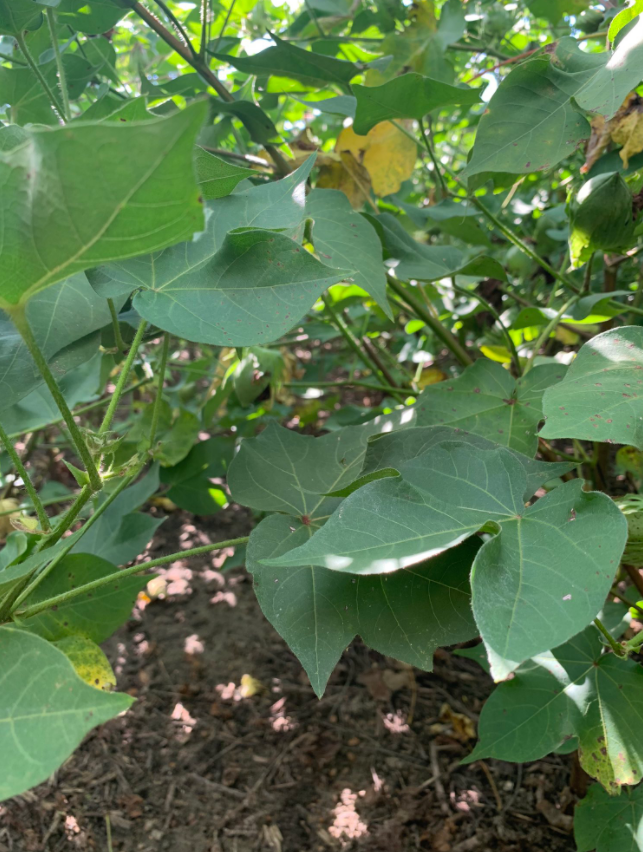Peanuts: The topic this week has been late spot. It has been a PERFECT year for leaf spot epidemics, according to Bob Kemerait.
A) we have had lots rain that enhances infection by leaf spot pathogens and spread of leaf spot diseases.
B) wet weather has led to extended delays between fungicide applications and even missed applications.
C) we have had shortages on many fungicides resulting in use of something other than what we really wanted.
D) many of our newer peanut varieties likely need an 8th fungicide application because of our extended growing season.
E) Delays in planting mean that much of our crop is still in the field when pressure from leaf spot is INTENSE and BLISTERING.
F) some of our newer peanut varieties are more susceptible to leaf spot than is Georgia-06G.
What to do? A) if two-three weeks out from digging, assess your field for disease. If leaf spot is not a problem (and white mold is not) then you may not need the sprayer in the field again. If leaf spot is in the field and not too severe, you might consider a last application. If you have lost 25% of your leaves, anticipate digging within two weeks, regardless of maturity. If you have lost 50%, you may have a week or 10 days max. 75% or more- the pods are likely dropping off now.

Peanut Maturity Clinics
The Colquitt County Cooperative Extension will be offering peanut hull scrape clinics starting on Wednesday, September 1. The clinics will be offered every Tuesday, Wednesday and Thursday until the end of September from 8:30 am to 10 am at the Colquitt County Extension office. The maturity of Georgia 6G have been running from 140 to 145 days to maturity in the Colquitt County maturity checks.
Remember that the accuracy of a peanut hull scrape maturity check is only as good as the sample you take. At least 5 to 6 adjacent plants from at least three representative parts of a field that can be dug in one day should be sampled. Keep these samples from each field area separate from the rest of your field samples. The average number of peanuts in a sample should be around 200.
If you planted GA-16HO’s this year be sure to check them NOW for stem strength. We are seeing some incidences where the stems are getting weak. Currently we are not sure what is causing the issue or whether it is isolated or widespread.
How much yield loss do I have if I dig too early or too late? Time of harvest is one of the most important decisions growers make each year. Peanuts may lose 300 to 500 lb per acre and 2 to 3% in grade during the week and a half before optimum harvest. Even greater losses may occur if harvest is delayed past optimum maturity. Table 1 below illustrates the average loss over several years from digging too early or too late. Dollars lost represent losses in clear profit, as no additional input is required other than digging at the optimum time.

Cotton: I have been getting questions about managing Areolate (Ramularia) mildew in cotton. If the cotton is within 4 weeks of anticipated defoliation or already 25% + prematurely defoliated, it probably would not be beneficial to use a fungicide.

Dr. Bob Kemerait, UGA Plant Pathologist was in Colquitt County last week rating a cotton fungicide trial. Treatments included Abound, Priaxor, Miravis Top and untreated. We will report the results after harvest.



Cotton Defoliation: Dr. Camp Hand was the keynote speaker at the Colquitt County Cotton Defoliation meeting last week, and he made a lot of good points. One was the cotton money tree, which depicted the location of bolls on the cotton plant as well as their value. which was done by Dr. Jared Whitaker.

This new value tree really emphasizes the importance of first setting those high dollar bolls early
in the season with proper management. Nearing the end of the growing season, overwatering and
irrigating your crop with a higher than 10% open boll in an effort to make young upper position low value
bolls open in the top will lead to losing or damaging your most valuable bolls and reducing yield and
profitability. Not to mention, those young bolls probably will not mature enough to be harvested.
Table 2 below shows the ” UGA Three-way” rates for defoliation.

Thank you for your time, please call your local extension agent with any questions
Thank You,
Jeremy Kichler
Colquitt County Extension coordinator
